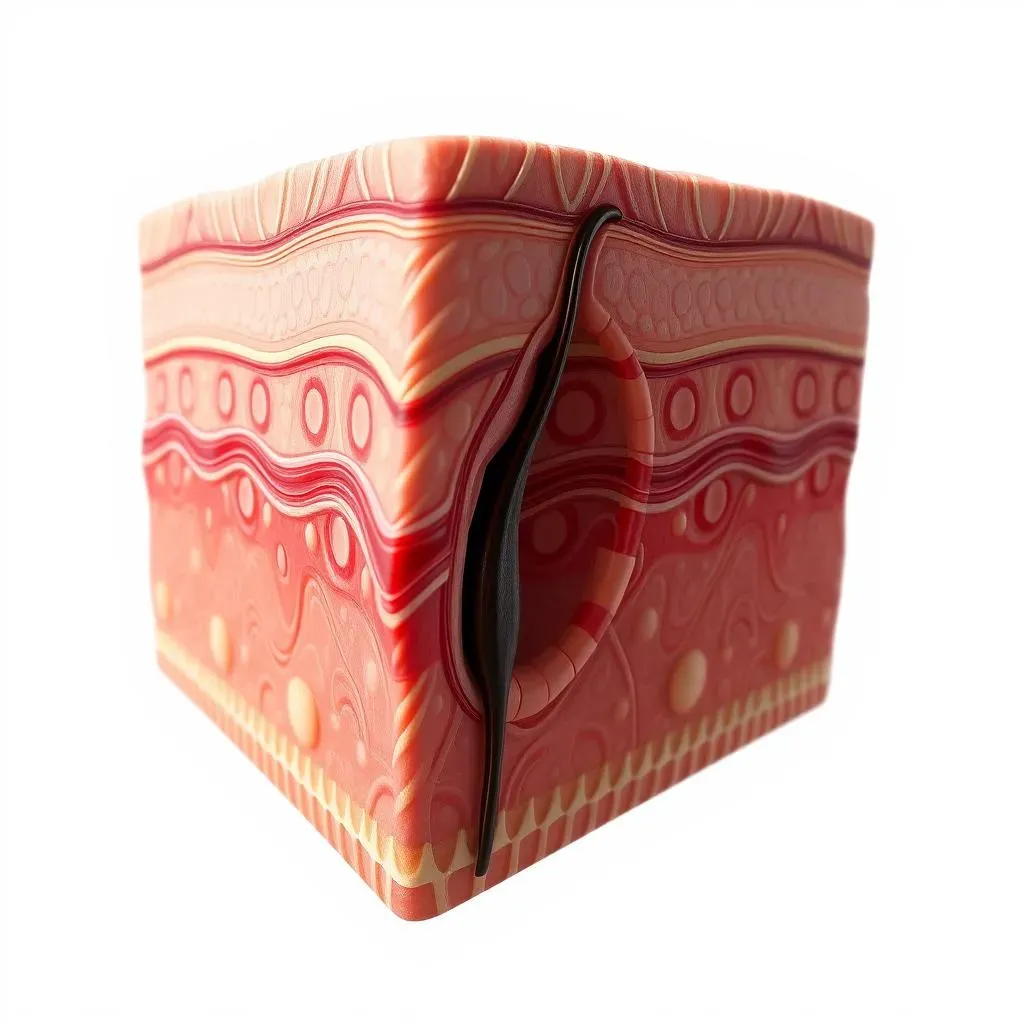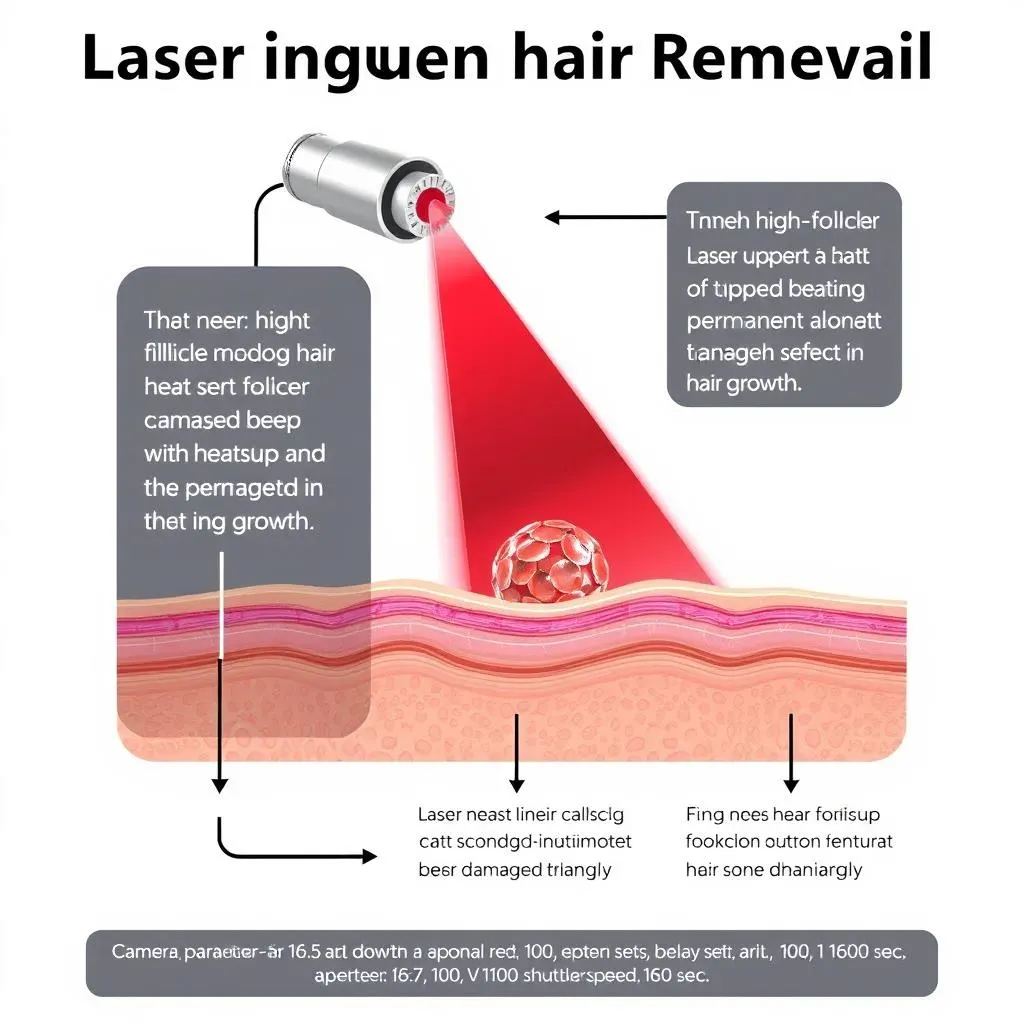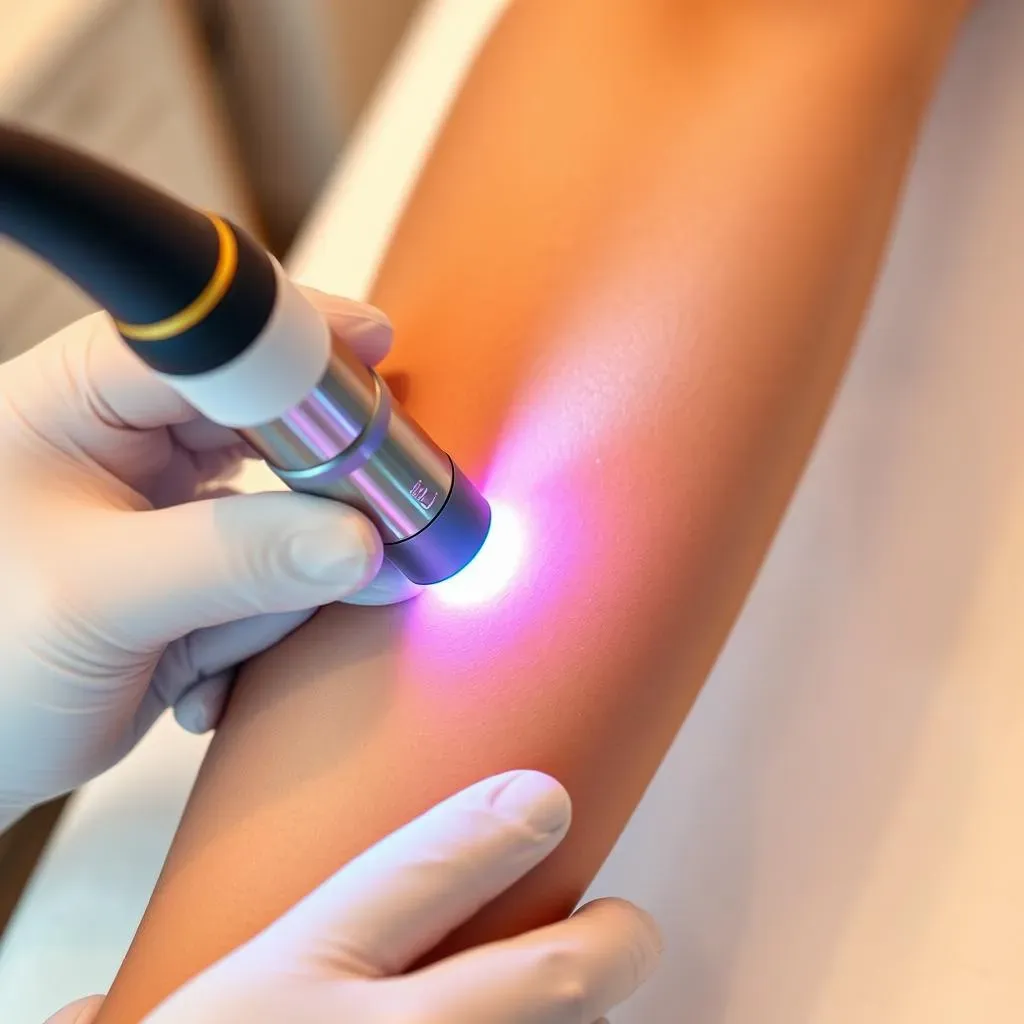Table of Contents
Ingrown hairs can be a frustrating and painful problem for many individuals, particularly those with curly or coarse hair. Shaving, waxing, and other hair removal methods can cause hairs to grow back into the skin, leading to inflammation, infection, and scarring. Fortunately, there is a permanent solution to this common issue: laser ingrown hair removal. This advanced treatment uses high-heat lasers to destroy the hair follicle, preventing regrowth and minimizing the risk of ingrown hairs. In this article, we will delve into the world of laser ingrown hair removal, exploring how it works, its benefits, and what to expect from the treatment. We will also discuss the different types of lasers used, the importance of choosing the right laser for your skin type and hair color, and provide tips for preventing ingrown hairs after treatment. Whether you're tired of dealing with ingrown hairs or simply looking for a more effective hair removal method, laser ingrown hair removal is definitely worth considering.
What are Ingrown Hairs and How Do They Occur?

What are Ingrown Hairs and How Do They Occur?
Understanding Ingrown Hairs
Ingrown hairs occur when hair grows back into the skin instead of outward, causing inflammation, redness, and sometimes infection. This can happen due to various reasons such as tight clothing, curly or coarse hair, and improper shaving or waxing techniques. Ingrown hairs are more common in areas with curly or coarse hair, such as the bikini line, underarms, and beard area.
Ingrown hairs can be painful and may lead to complications like scarring, hyperpigmentation, and bacterial or fungal infections. If left untreated, ingrown hairs can cause long-term damage to the skin and hair follicles, making it essential to address the issue promptly.
Causes of Ingrown Hairs | Symptoms | Complications |
|---|---|---|
Tight clothing, curly or coarse hair, improper shaving or waxing | Pain, inflammation, redness, itching, and pus | Scarring, hyperpigmentation, bacterial or fungal infections |
Risk Factors for Ingrown Hairs
Certain individuals are more prone to ingrown hairs due to their hair type, skin tone, or grooming habits. For example, people with curly or Afro-textured hair are more likely to experience ingrown hairs because their hair tends to curl back into the skin. Similarly, those with thicker or coarser hair may experience more ingrown hairs due to the sharper edges of their hair.
Improper shaving techniques, such as shaving too closely or against the grain, can also increase the risk of ingrown hairs. Additionally, waxing or sugaring can cause hair to break off below the skin's surface, leading to ingrown hairs.
- Curly or Afro-textured hair
- Thick or coarse hair
- Improper shaving or waxing techniques
- Tight clothing
Prevention and Treatment Options
While ingrown hairs can be treated with topical creams, antibiotics, or minor surgical procedures, prevention is key. Exfoliating the skin regularly, using gentle shaving techniques, and wearing loose clothing can help reduce the risk of ingrown hairs.
However, for those who experience frequent or severe ingrown hairs, laser ingrown hair removal offers a more permanent solution. By destroying the hair follicle, laser treatment prevents hair regrowth and minimizes the risk of ingrown hairs.
How Laser Ingrown Hair Removal Works

How Laser Ingrown Hair Removal Works
The Science Behind Laser Ingrown Hair Removal
Laser ingrown hair removal works by targeting the hair follicle with a high-heat laser. The laser emits a beam of light that is absorbed by the pigment in the hair, causing the follicle to heat up and eventually become damaged. This damage inhibits the hair's ability to grow, leading to a permanent reduction in hair growth.
The procedure is relatively painless and can be performed on most skin types. However, it's essential to choose the right type of laser for your skin tone and hair color. For example, diode lasers are best suited for lighter skin tones, while Nd:YAG lasers are more suitable for darker skin tones.
Laser Type | Skin Tone | Hair Color |
|---|---|---|
Diode Laser | Fair to Medium | Dark |
Alexandrite Laser | Fair | Light Brown to Blond |
Nd:YAG Laser | Medium to Dark | Coarse or Thick |
How the Procedure is Performed
During the laser ingrown hair removal procedure, the technician will use a handheld device to apply the laser to the affected area. The laser emits a beam of light that targets the hair follicle, causing it to heat up and become damaged. The procedure can take anywhere from a few minutes to an hour, depending on the size of the area being treated.
Most people require multiple sessions, spaced 4-6 weeks apart, to achieve optimal results. After each session, the technician will provide instructions on how to care for the treated area, including avoiding direct sunlight and using gentle skincare products.
- Avoid direct sunlight for at least 24 hours
- Use gentle skincare products
- Exfoliate the skin 1-2 weeks after treatment
Preparation and Aftercare
Before undergoing laser ingrown hair removal, it's essential to prepare the skin. This includes avoiding waxing, tweezing, and depilatory creams for at least 4-6 weeks. You should also avoid sun exposure and use a broad-spectrum sunscreen with at least SPF 30.
After the procedure, it's crucial to follow the technician's aftercare instructions to minimize the risk of complications. This includes applying a topical cream to soothe the skin and avoiding strenuous activities for at least 24 hours.
Pre-Treatment | Post-Treatment |
|---|---|
Avoid waxing, tweezing, and depilatory creams | Apply topical cream to soothe the skin |
Avoid sun exposure | Avoid strenuous activities |
Advantages of Laser Ingrown Hair Removal

Advantages of Laser Ingrown Hair Removal
Reduced Risk of Ingrown Hairs
Laser ingrown hair removal is a highly effective way to reduce the risk of ingrown hairs. By destroying the hair follicle, the laser prevents hair regrowth, minimizing the likelihood of hairs growing back into the skin. This is especially beneficial for individuals who experience frequent ingrown hairs due to curly or coarse hair.
After undergoing laser hair removal, many people notice a significant reduction in ingrown hairs. In fact, a study found that laser hair removal can reduce ingrown hairs by up to 90%. This makes it an excellent option for those who have tried other hair removal methods without success.
Benefits | Results | Comparison to Other Methods |
|---|---|---|
Permanent hair reduction | Up to 90% reduction in ingrown hairs | More effective than waxing or shaving |
Smooth, Hair-Free Skin
Laser ingrown hair removal provides a permanent solution for smooth, hair-free skin. Unlike waxing or shaving, which require frequent maintenance, laser hair removal can leave your skin feeling silky and smooth for an extended period. This is especially beneficial for areas like the bikini line, underarms, and legs, where ingrown hairs are most common.
With laser hair removal, you can say goodbye to the hassle of daily shaving or weekly waxing. Imagine having the confidence to wear your favorite clothes without worrying about unsightly hair or ingrown hairs. Laser hair removal gives you the freedom to enjoy smooth skin all year round.
Minimized Risk of Complications
Laser ingrown hair removal is a safe and minimally invasive procedure. Unlike surgical hair removal methods, laser treatment doesn't require any incisions or downtime. The risk of complications, such as scarring or infection, is minimal when the procedure is performed by a qualified technician.
Additionally, laser hair removal can help prevent folliculitis, a skin condition that causes inflammation of the hair follicles. By destroying the hair follicle, laser treatment reduces the risk of folliculitis and other complications associated with ingrown hairs.
- Reduced risk of scarring
- Minimized risk of infection
- Prevents folliculitis
Choosing the Right Laser for Your Skin Type and Hair Color

Choosing the Right Laser for Your Skin Type and Hair Color
Understanding Skin Types and Hair Colors
Choosing the right laser for your skin type and hair color is crucial for effective and safe laser ingrown hair removal. Different lasers are better suited for specific skin tones and hair colors, and using the wrong laser can lead to complications or ineffective treatment.
There are six skin types, ranging from very fair (Type I) to very dark (Type VI). Each skin type has a different level of melanin, which affects how the laser interacts with the skin. For example, people with darker skin have more melanin, which can absorb the laser's energy and reduce its effectiveness.
Skin Type | Characteristics | Recommended Laser |
|---|---|---|
Type I: Very Fair | Palear skin, burns easily | Diode Laser |
Type II: Fair | Light skin, burns occasionally | Alexandrite Laser |
Type III: Medium | Medium skin, tans gradually | Nd:YAG Laser |
Type IV: Olive | Darker skin, tans easily | Nd:YAG Laser |
Type V: Brown | Dark skin, rarely burns | Nd:YAG Laser |
Type VI: Very Dark | Very dark skin | Nd:YAG Laser |
Matching Laser to Hair Color
Hair color is another critical factor in choosing the right laser. The laser targets the pigment in the hair, so it's essential to select a laser that can effectively target your hair color. For example, diode lasers are best suited for dark hair, while alexandrite lasers are better for lighter hair colors.
- Dark Hair: Diode Laser
- Light Brown to Blond Hair: Alexandrite Laser
- Coarse or Thick Hair: Nd:YAG Laser
Considerations for Different Skin Tones
For individuals with darker skin tones, it's essential to use a laser that can penetrate deeper into the skin without being absorbed by the melanin. Nd:YAG lasers are often used for darker skin tones because they have a longer wavelength, which allows them to bypass the melanin and target the hair follicle.
On the other hand, individuals with lighter skin tones can use lasers with shorter wavelengths, such as diode or alexandrite lasers. These lasers are more effective for lighter skin tones because they can target the hair pigment more easily.
Skin Tone | Laser Recommendation | Wavelength |
|---|---|---|
Light | Diode Laser | 800nm |
Medium | Alexandrite Laser | 755nm |
Dark | Nd:YAG Laser | 1064nm |
Frequently Asked Questions About Laser Ingrown Hair Removal

Frequently Asked Questions About Laser Ingrown Hair Removal
Q&A About Laser Ingrown Hair Removal
Laser ingrown hair removal is a popular treatment for individuals who struggle with ingrown hairs. However, many people have questions about the procedure, its effectiveness, and potential risks. Here are some frequently asked questions about laser ingrown hair removal:
Q: Is laser ingrown hair removal painful?
A: Most people find the procedure relatively painless. Some may experience a mild stinging sensation, but this is typically manageable with topical anesthetics or cooling devices.
Question | Answer |
|---|---|
Is laser ingrown hair removal permanent? | Yes, laser hair removal is a permanent solution. However, maintenance sessions may be needed to achieve optimal results. |
How many sessions are required? | Typically, 3-6 sessions are needed, spaced 4-6 weeks apart. |
Is laser ingrown hair removal suitable for all skin types? | Laser hair removal can be used on most skin types, but it's essential to choose the right laser for your skin tone and hair color. |
Common Concerns and Misconceptions
Some individuals may be hesitant to try laser ingrown hair removal due to concerns about cost, effectiveness, or potential complications. Here are some common misconceptions and facts about the treatment:
- Cost: While laser hair removal may seem expensive, it can be more cost-effective in the long run compared to regular waxing or shaving.
- Effectiveness: Laser hair removal is highly effective, with up to 90% reduction in hair growth.
- Complications: Laser hair removal is generally safe, but it's essential to follow aftercare instructions to minimize the risk of complications.
Concern | Reality |
|---|---|
Cost | More cost-effective in the long run |
Effectiveness | Up to 90% reduction in hair growth |
Complications | Generally safe, but aftercare is crucial |
Overall, laser ingrown hair removal is a safe and effective solution for individuals who struggle with ingrown hairs. By understanding the procedure, its benefits, and potential risks, you can make an informed decision about whether laser ingrown hair removal is right for you.
Conclusion
Laser ingrown hair removal is a game-changing solution for those who suffer from ingrown hairs. By destroying the hair follicle, this treatment prevents regrowth and reduces the risk of ingrown hairs. With its numerous benefits, including permanent results, reduced risk of complications, and suitability for all skin types, laser ingrown hair removal is an attractive option for anyone looking for a smooth, hair-free complexion. While it's essential to follow proper aftercare and maintenance to prevent ingrown hairs from forming, the results are well worth the investment. If you're tired of dealing with the discomfort and frustration of ingrown hairs, consider consulting a specialist at Hairawaybylaser.com to determine if laser ingrown hair removal is right for you.
